Tricep cramp is an uncomfortable sensation that occurs in the triceps brachii, which is the three-headed muscle that’s located on the back of your upper arm. Since the triceps brachii attaches to the elbow and shoulder, you may experience triceps cramping close to these areas, as well in the belly of the triceps muscle.
This guide goes through some of the most common tricep cramp causes and then explains how you can treat your tricep cramps. As always, if the cramping persists, make sure to talk to your doctor so that they can give you a proper diagnosis.
Related:
What causes tricep cramp?
Muscle strains, excessive triceps exertion, dehydration, and mineral depletion are all common causes of tricep cramp. Learn how each of these problems causes your triceps to cramp.
Triceps strains
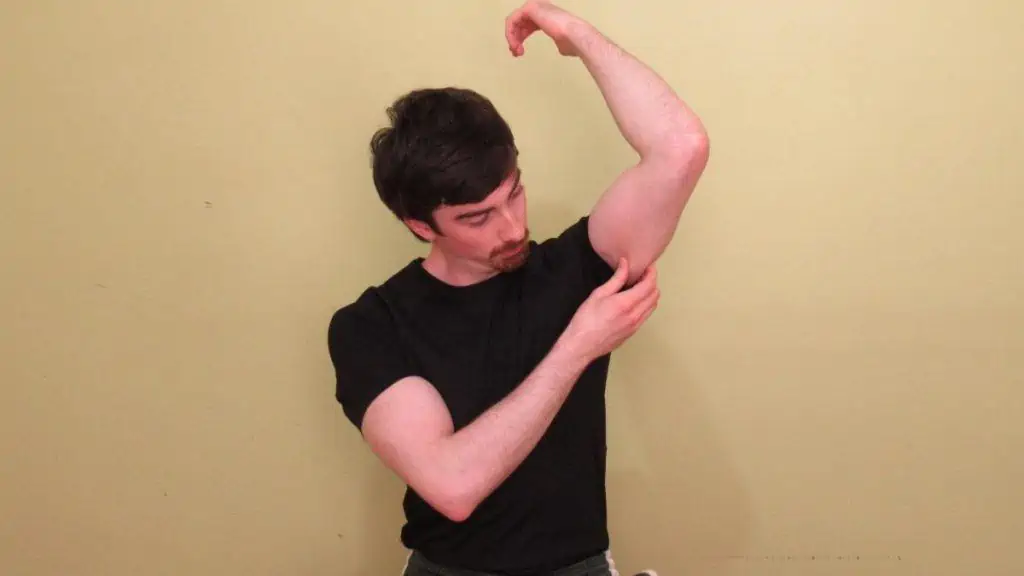
Tricep strains typically occur in two main ways, with the latter often leading to more serious injuries.
The first potential cause of triceps cramp is overuse injuries. If you keep on performing the same exercises or doing the same tasks that involve the triceps, then you could strain the triceps muscle itself.
The other cause of a tricep strain is an acute injury due to overexertion of the triceps muscle. These injuries, which can lead to tricep tears in some cases, are most common among athletes and typically occur when doing weight lifting and arm-dominant sports like baseball.
Tricep strains are different from tricep muscle soreness in that they’re rarer and take longer to recover from. So if it’s been more than a week since you last trained your triceps, and they’re still cramping (especially if it’s just one of your triceps), then you should definitely talk to your doctor to get a clear picture of what’s going on in your triceps muscle.
Dehydration

If you’re an athlete that trains or competes in a hot environment, then you might get tricep cramps due to dehydration. Of course, even if you’re working out in a nicely air-conditioned gymnasium, you can still experience triceps cramping if you’re training really hard and not giving your muscles the water that they need.
If you feel a spasm in your triceps, then it could be a sign that you’re dehydrated and need to drink more water. Ideally, you should drink water before your session so that you don’t start your workout in a dehydrated state.
As for how much water you should drink, there’s no exact amount, so just make sure that you feel nicely hydrated during your training session. In general, larger people and those who train (or work) in hot environments need to drink more water. [1]
Muscle fatigue
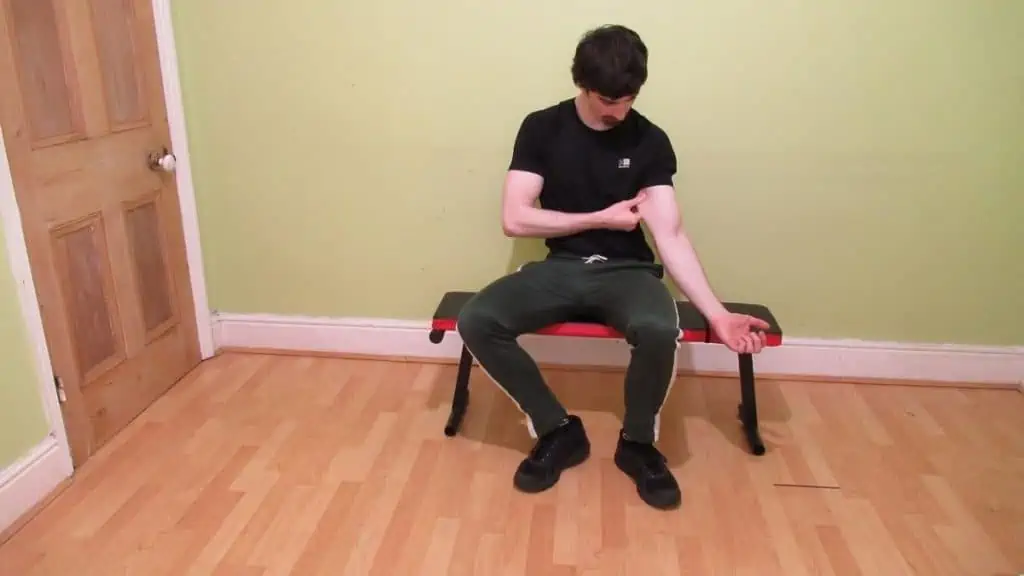
If you train your triceps intensely, then you’ll naturally start to feel a burn in your triceps as metabolites enter your muscle. However, if you’re not accustomed to intense resistance training—or if you’re training your triceps much harder than usual—then it’s possible that you’ll experience a cramping sensation in your triceps.
Triceps cramping due to exertion during weight training is more common when you perform higher repetitions and train at a closer proximity to muscular failure because this training style fills your muscle with metabolites.
On the contrary, when you lift really heavy weights for fewer reps, your muscles are unlikely to cramp up but are also open to a higher risk of acute injuries (such as triceps tendonitis and tricep strains/tears).
Mineral depletion
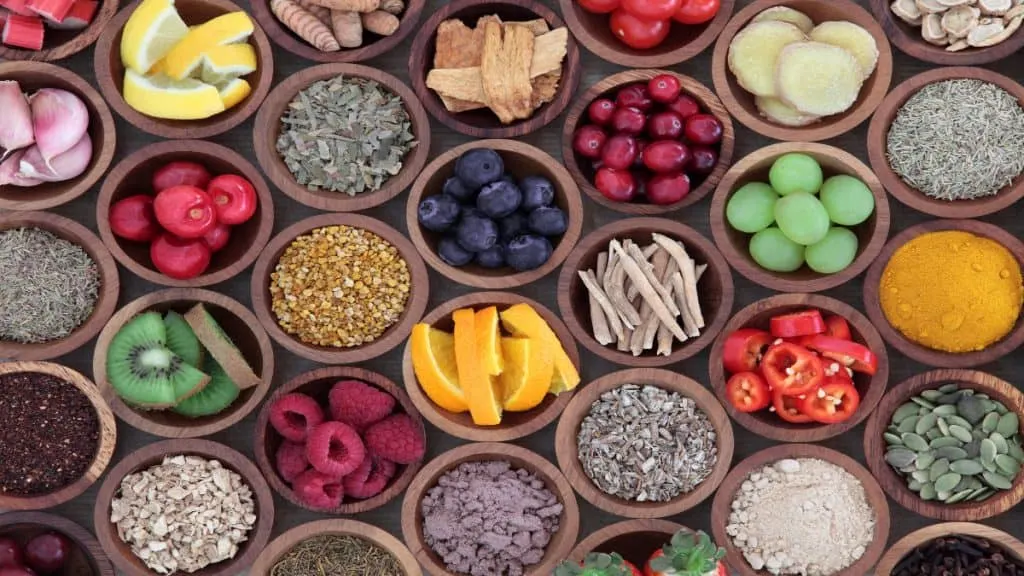
When you sweat, your body loses water and minerals, which, if lost in large quantities, can result in triceps cramps (and muscle cramps in general).
The longer and the more intense your bout of exercise is, the more minerals you’re likely to lose. As such, it’s a good idea to replenish your stores of magnesium, zinc, copper, potassium, sodium, and calcium. [2]
Electrolyte drinks have been shown to prevent muscle cramp after intense exercise, so these products may be worth looking into if you’re experiencing frequent tricep cramps. [3]
As always, if you have sore triceps, talk to your doctor first so that you can rule out more serious problems.
How can you stop tricep cramps?
Triceps cramps are annoying, uncomfortable, and they can stop your workout or activity dead in its tracks. But by taking advantage of these simple and natural lifestyle interventions, you can drastically decrease your risk of experiencing triceps cramp in the future.
Drink more water
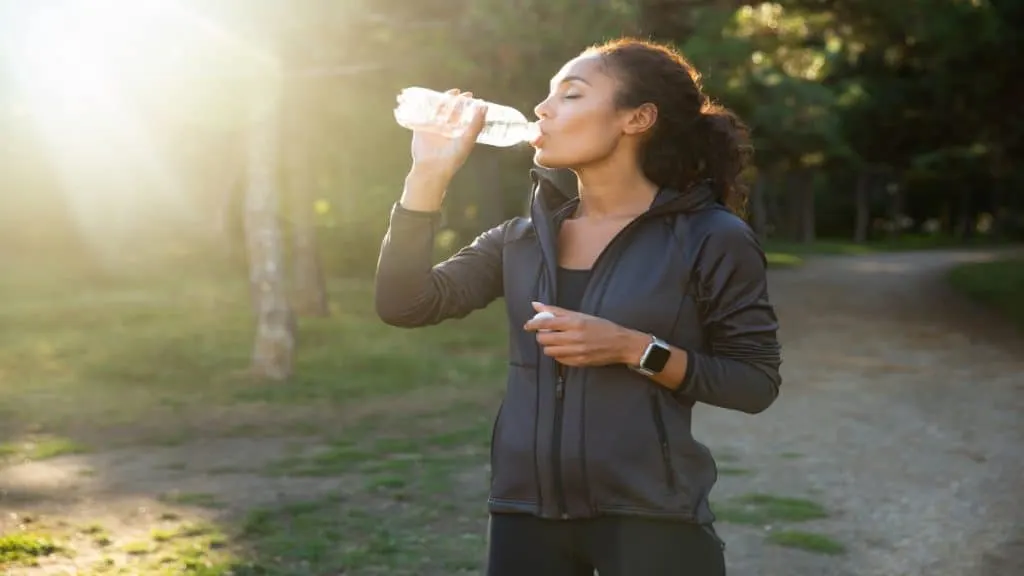
Even though electrolyte drinks do have their place within a well-thought-out dietary regime, they’re not necessary for everyone, especially if you’re just performing moderately intense workouts.
Drinking plenty of water, however, is a simple and effective strategy for preventing (and limiting the severity of) tricep cramps and muscular cramps in general. It’s the most accessible tricep cramp treatment that there is.
Starting your workout in a hydrated state will make sure that your triceps can cope with the tension and torque that you put them through. Then, as you start to sweat, make sure to drink more water to replenish some of the liquid that you’re losing.
Of course, when it comes to hydration, it’s not a case of the more water, the better. If you feel sick or bloated, then you’re likely drinking too much water.
Eat a nutritious diet

As mentioned, intense exercise increases your demand for various minerals, which are lost when you sweat. You can get plenty of minerals through your diet so that your triceps won’t cramp up when you work out or perform your daily tasks.
Bananas, potatoes, and apricots are just some of the foods that have plenty of potassium.
Similarly, nuts and seeds (some more so than others) are known for their high magnesium content.
The point is that you don’t always need mineral supplements unless your doctor has recommended them. While most of these mineral supplements are safe when taken in sensible quantities, many people can get enough magnesium, potassium, zinc, etc., through their diet.
Rest your triceps
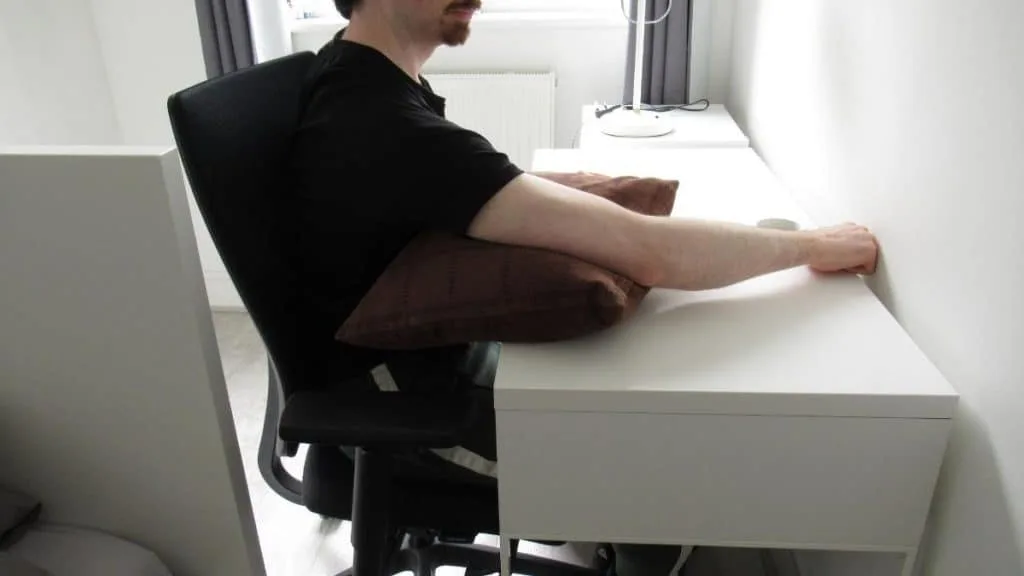
If you’re experiencing tricep cramping of any kind, the first thing that you should do is rest your triceps. If you try to train through the pain, then you might make it worse, which is particularly true if you have a tricep strain (you don’t want that strain to turn into a tear).
After all, if your tricep is cramping, then it could be because you’re using it too frequently, perhaps without realizing it (for example, not everyone knows that the triceps are involved in many different back exercises).
If your triceps cramp is accompanied by swelling, then it can also be a good idea to ice the affected area (for 10-20 minutes every 2-3 hours) to prevent the pain from worsening.
Stretch your triceps

If you have tricep cramp due to dehydration or mineral depletion—in other words, not because of an injury—then stretching your triceps can really help to loosen up the backs of your arms and get rid of that intense knotting up sensation.
Since the triceps acts on the shoulder as well as on the elbow, the best stretch that you can do is the overhead tricep stretch, where you place one arm behind your back and then pull it toward the midline of your body with your spare arm.
You could also try to massage the part of your triceps that’s cramping with your fingers or a lacrosse ball. This can help to get rid of any knots in the triceps muscle and enable it to contract again without cramping up.
Don’t train as hard
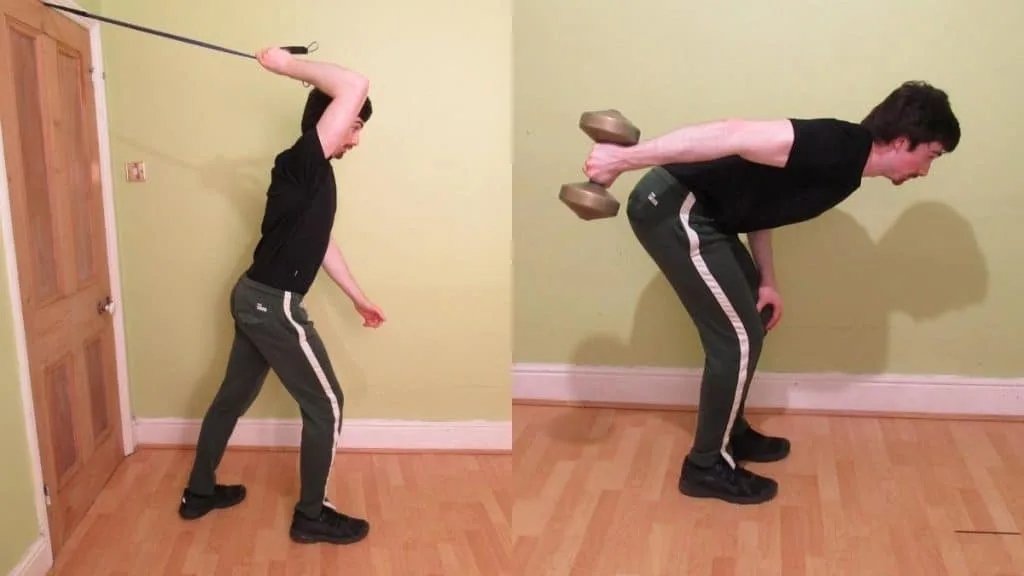
Every weight lifter has experienced some kind of muscle cramp before. For the triceps, this can occur when you’re doing an elbow-intensive exercise (bench press, pushdowns, overhead extensions) close to muscular failure.
Sometimes, when your triceps become really fatigued, they can cramp up and become painful. Since this happens due to repeated muscular contractions, a good solution is to stretch your triceps (which is the opposite of a contraction) so that you can stop your triceps from knotting up.
On the other hand, you can simply leave a few reps in the tank during your sets so that you can decrease your risk of experiencing triceps cramp due to overexertion.
The verdict on triceps cramping
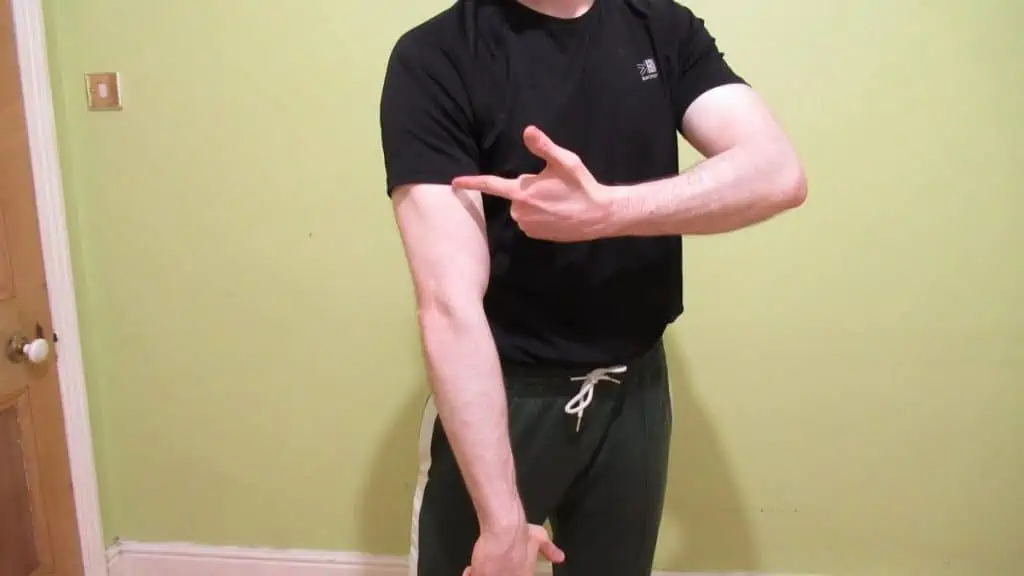
Tricep cramp can be both a side effect of intense resistance training and a sign that you’ve got a triceps injury. If the cramping subsides, especially quickly, then it’s likely temporary and nothing to worry about.
However, if you’re still getting tricep cramps hours or days after your workout, then you might have strained or torn your triceps, in which case you should definitely talk to your doctor so that they can give your arm a physical examination.
References
- Keeping hydrated for exercise | Health Information | Bupa UK. (2022). Bupa. https://www.bupa.co.uk/health-information/exercise-fitness/hydration-exercise
- Mayo Clinic. (2021, March 3). Muscle cramp – Symptoms and causes. https://www.mayoclinic.org/diseases-conditions/muscle-cramp/symptoms-causes/syc-20350820
- Lau, W. Y., Kato, H., & Nosaka, K. (2019). Water intake after dehydration makes muscles more susceptible to cramp but electrolytes reverse that effect. BMJ open sport & exercise medicine, 5(1), e000478. https://doi.org/10.1136/bmjsem-2018-000478

